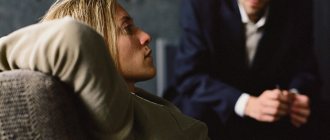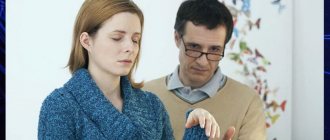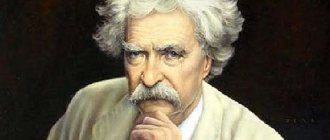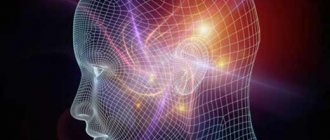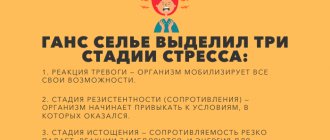For centuries, people have been trying to understand the relationship between a person’s physical appearance and his mental state. Either they believed that they had no contact with each other, or they called somatics a bridge between them. And there are also concepts for which phobias, dominant feelings, temperament, some mental disorders and other personality traits leave subtle imprints on a person’s appearance. And, if you see them and eliminate them, you can cope with many problems. Body-oriented therapy, or TOT for short, deals closely with this.
Body-oriented therapy - what is it?
Even during the Middle Ages, yogis, sorcerers and shamans knew that through a system of special breathing and physical exercises the soul could be healed. Yoga asanas, ritual dances, sexual dances, oriental martial arts - this is not a complete list of what can be considered a prototype of body-oriented correction.
The founder of body-oriented therapy in the modern understanding of this term is W. Reich. Reich's teachers were K. Marx, K.G. Jung and S. Freud.
Over time, Reich developed his concept of treating the soul through the body, which is known today in most countries of the world. Practicing psychologists and psychotherapists adapted Reich's teachings to the characteristics of the clients with whom they work, as a result of which many variations of body-oriented methods of psychological correction are now known.
The universal abbreviation TOT (body-oriented therapy) includes a set of psychotherapeutic methods that help a person cope with mental experiences with the help of certain influences on the body from a psychologist or psychotherapist.
In other words, body-oriented therapy classes help a person learn to transform negative events of the past into emotionally neutral memories and get rid of psychosomatic manifestations.
Today it is believed that bodily therapy is a promising area of activity for healers of human souls.
Basics
Basic Concepts
Body-oriented therapy is based on a fundamental concept, without which this direction cannot be imagined. This is a bodily shell, although it has many other synonymous terms: muscular, muscular, characterological armor, muscle clamps, ego-defense. In total, the human body is divided into 7 problem areas, where it can form in accordance with the received psychological trauma.
According to Wilhelm Reich, the bodily shell is the body’s defenses, physically suppressing fears, internal anxiety, complexes and everything that poses a threat to the psyche.
Orgone energy is what Reich called libido, known to everyone according to Freud, which is released as a result of working with shells.
Unraveling is the name given to the process of releasing muscle tension in body-oriented therapy.
Shell formation diagram
Unlike all other areas, body therapy closely connects what is happening in a person’s soul with his appearance. According to her teaching, contact between them is established as follows:
1. Psychotrauma.
2. The specific situation associated with it is causing concern.
3. A person seeks to protect himself from this anxious state and a repetition of what happened.
4. He suppresses his fear with the help of “muscle clamps” in a certain part of the body.
5. This forms simultaneously:
- character or pattern of behavior;
- bodily shell.
An example of how this scheme works in practice:
1. At school, the child is constantly told that he is nothing.
2. He doesn’t want to go to school because of this.
3. Since this must be done day after day, he tries to avoid direct contact with the one who tells him this.
4. Does not look into the eyes, lowers his gaze, closes his eyes, wrinkles his forehead.
5. This forms:
- low self-esteem;
- body shell "Blocks in the eye segment."
Scheme of working with the shell
To help a person solve his problems, body psychotherapy works in parallel with both entities - external and internal:
- The type of bodily shell is revealed, and where exactly it is located.
- Gradually relieve tension from the problem area of the body using various techniques.
- Along the way, psychotrauma is revealed.
- Parallel work is underway with it.
- Orgone energy is released.
- Neurotic and other disorders are cured.
For a long time, within the framework of body-oriented psychotherapy, specialists worked only with muscle tension, believing that after their elimination, psychological trauma would automatically disappear. And only after a while it was concluded that it was necessary to remove both at the same time. This way you can ensure a lasting effect of the sessions and a guarantee that the problem will not return again.
The essence of therapy
Wilhelm Reich noticed that people with similar constitutions had experienced similar emotional upheavals in the past. Their psychodynamics are identical. Different people, when faced with stress, react to it in almost the same way. That is why people who have experienced psychological violence are characterized by a special pattern of behavior: individual muscles of their body are constantly tense, their movements are devoid of grace and smoothness, they do not know how to express their emotions in adequate ways. A person’s character and individuality turn out to be securely hidden behind a muscular shell. This protective box negatively affects not only a person’s appearance, but also his psychological well-being: a person’s posture from the outside looks unnatural, and poor circulation due to muscle tension leads to distortion of the functioning of internal organs. Often the protective shell becomes the cause of the development of arthrosis and osteochondrosis.
The personal growth of a person under a protective shell stops. A person consciously suppresses negative emotions about this, paying for it with nervous tics, stuttering, neuroses, psychoses, addictions, stomach ulcers, and dystonia. Sexual desires are also suppressed, which results in aggressiveness. Repressed desires and needs settle in one or another part of the body. This load does not allow the flow of positive energy to circulate freely in the body.
Wilhelm Reich experimentally established that the situation can be changed if you influence the body in a certain way. You can relieve muscle tension with the help of specially selected physical exercises. Body-oriented therapy sessions help a person realize and accept his own needs and desires, which opens the way to personal growth. This is why body therapy has become a favorite tool of chiropractors and a leading technique in reflexology. The protective shell can be completely eliminated only after a detailed study of suppressed emotions.
During body-oriented therapy sessions, the psychologist teaches the client to pay attention to constant tension in one or another part of the body. Analyzing the localization of tension, the psychologist, together with the client, establishes the possible cause of its occurrence. If you can identify the cause of the tension, you will be able to work through the repressed experiences.
Reich believed that a prerequisite for the success of body-oriented therapy is working through the blocks of the shell from top to bottom:
- Eyes, forehead, eyebrows, scalp. The protective armor of the eyes arises due to social fears and poor development of a person’s communicative qualities. It causes psychosomatic disorders such as lacrimation, poor visual acuity, causeless headaches, migraines, and baldness.
Signs of muscle tension in this sector are:
- poorly expressed facial expressions, the feeling of a frozen mask on the face;
- shifting gaze; when speaking, it is difficult for a person to look into the eyes of the interlocutor;
- a pronounced vertical fold on the bridge of the nose, numerous horizontal wrinkles on the forehead.
The causes of frontal armor are considered to be excessive intellectual activity, violation of the work and rest regime, and chronic fatigue.
- Oral block (back of the head, lips, oral cavity, chin). The clamp in this block appears as
- the need to chew something all the time;
- tense jaw;
- nodules periodically running across the face.
In children, it is expressed in a tendency to make faces and tease. As a rule, such people are laconic, secretive, and reserved. Negative emotions are never shown externally. There are no psychosomatic manifestations.
The reason for the appearance of an oral shell is considered to be the need to constantly control oneself and restrain one’s aggression.
Oral clamping can cause complications on the back muscles. Massage for such back pain provides only temporary relief, since it does not remove the clamp from the jaw.
- Neck, throat. A neck clamp leads to loss of harmony with yourself and with the world. The presence of a shell in this section is evidenced by:
- quiet voice;
- neurotic cough;
- increased salivation, frequent swallowing.
People with armor in the neck and throat area do not tend to talk about their feelings or express their dissatisfaction. They often become victims of injustice, but never strive to defend their rights and interests.
The cause of neck armor is usually a hidden grudge against parents. The dependence on gadgets characteristic of modern youth can also lead to petrification of the neck muscles.
In the field of psychosomatics, tension in the muscles of the throat and neck is manifested by frequent sore throats and the sensation of a lump in the throat. If a person ignores the discomfort in the neck area, gradually this muscle clamp will go lower: the chest shell will “grow” to the cervical shell.
- Chest, shoulders, arms. Muscle tension in the chest area manifests itself
- feeling of heaviness in the chest;
- curvature of the spine;
- posture disorders;
- difficulty breathing;
- asymmetrical shoulder position. If a person is characterized by increased anxiety, the shoulders will be raised. If an individual has pathologically low self-esteem, his shoulders will droop.
As a rule, people with a pectoral shell have extremely low flexibility. They often complain of muscle pain in the shoulders, sweating of the palms, and shortness of breath.
The chest shell does not allow a person to show love, to be passionate about anything, or to dream. Such people suffer from unrequited love, pathological jealousy, and betrayal of loved ones.
The pectoral carapace can arise as a result of the complex socialization of the individual. It is most likely to develop in a schoolchild who is rejected by his peers.
- Diaphragmatic region, solar plexus, lower spine. Externally, this clamp manifests itself
- difficulty breathing;
- low vital capacity of the lungs;
- scoliosis;
- a tendency to put off important things until later;
- a tendency to start several things at once and not finish any of them;
- a tendency to live in a fantasy world, disconnected from reality.
Psychosomatics manifests itself in the form of pulmonary diseases and frequent vomiting. The diaphragmatic shell is formed if parents forbid the child to openly show his feelings and call for silence and calm. It can also develop as a result of severe emotional shock. In adult life, pressure in this area can arise if a person is forced to constantly interact with people who are unpleasant to him.
- Abdominal section. The clamp in this area manifests itself:
- protruding belly;
- digestive problems, obesity;
- suspiciousness;
- suspicion;
- a tendency to take a defensive position in advance in the process of interpersonal interaction;
- anger, unmotivated aggression;
- envy.
All childhood anxieties and fears settle in the abdominal cavity. As a result of emotional overload, the body produces an excess amount of bile: such a person is said to be “a snake that spits poison.” An overfilled stomach does not allow a person to calmly accept criticism, resolve conflicts peacefully, or build diplomatic relations.
- Hip area, legs. The hip shell appears as:
- Protrusion of the pelvis;
- Constant tension in the gluteal muscles;
- An unnatural gait in which a person’s legs do not straighten completely.
The formation of a protective shell in the pelvic area is associated with social prohibitions on the expression of sexuality and the satisfaction of intimate needs. Also, a hip lock may appear due to an unsuccessful first sexual encounter or an act of violence. This kind of clamps often appears in anxious people with low self-esteem.
The pressure in this area prevents a person from enjoying love and sex and forces him to live in constant anticipation of danger and deception. His legs seem weak to him. His unsteady gait is explained by constant trembling in his knees.
A sign that therapy has been successful is a positive change in a person’s lifestyle, self-acceptance and self-realization. Body-oriented therapy methods and exercises that you can do at home yourself help restore mental balance and harmony with the world around you.
Wilhelm Reich
Wilhelm Reich
The founder of body-oriented psychology, Wilhelm Reich, was born on March 24, 1897 in Galicia, which at that time was part of the Austro-Hungarian Empire.
Early in his career, Wilhelm Reich was an assistant to Dr. Sigmund Freud. However, later their paths diverged.
Wilhelm Reich became interested in science and bioenergy and created his own direction in psychology.
In 1939, Reich moved to New York where he first presented to the world his concept of ORGONE (Latin: ORGANISMUS - living being) - the omnipresent vital energy, the driving force of the Universe, which will fill all life on earth.
ORGONE, Reich argued, circulates freely throughout the human body, but only if there are no muscle tension in the body.
As soon as a person's body becomes constricted, the natural flow of energy is disrupted, which leads to illness.
In fact, the concept expressed by Reich was not something new.
The description of ORGONE is very similar to the description of vital force - QI Energy, on the basis of which Chinese medicine has been built for thousands of years.
Other eastern practices are also based on the understanding and control of life energy, which has different names in different cultures.
An innovation was Reich's invention - a technical device that allows one to concentrate ORGONE and direct it into the human body.
Wilhelm Reich's orgone accumulator (1939)
Using this device, which was called ORGONE BATTERY , Reich conducted experimental treatment of people suffering from incurable diseases such as cancer, angina, epilepsy and others.
There are several confirmed cases of cure for potentially hopeless patients.
However, these facts have been questioned by the scientific community. Reich was denied a license to manufacture the ORGONE ACCUMULATOR.
Moreover, Reich’s activities related to the study of ORGON and the use of hardware for the accumulation and control of ORGON were prohibited by the authorities.
Disobeying the authorities, Reich continued his research into ORGON, for which he was arrested.
Some time later, in 1957, Wilhelm Reich died in prison.
The official cause of death is a heart attack, but there is evidence indicating the violent death of the scientist...
Methods of body-oriented psychotherapy
The main methods of body-oriented therapy are:
- characterological analysis of W. Reich;
- autonomic therapy;
- primary therapy, Arthur Yanov;
- somatic therapy D. Boadell;
- method of analysis of posture and bearing F.M. Alexander;
- bioenergy analysis by A. Lowen;
- biodynamic method;
- bioenergy system therapy;
- psychotonic;
- structural integration I. Rolf;
- M. Feldenkrais's method of restoring grace and freedom of movement;
- sensory awareness method;
- core energy method by John Pierrakos;
- self-analysis of behavior;
- organismic psychotherapy;
- process therapy;
- Hakomi;
- thanatotherapy;
- correction of psychological attitudes;
- a method for eliminating negative habits;
- method of emotional liberation;
- massage with fingers and elbows of a masseur;
- radix;
- insight method;
- Rosen method;
- motor exercises and their analysis;
- breathing exercises;
- dance;
- acting skills;
- sound therapy;
- meditation;
- yoga;
- hypnosis;
- group therapy;
- self-diagnosis.
All of these methods are based on the inextricable connection between the psycho-emotional state of a person and his bodily shell. They use various options for the therapist’s contact with the patient’s body: massage, soft touch, pressure, breathing control.
Using methods and techniques of body-oriented therapy, psychotherapists treat depression, neuroses, mental trauma and their consequences.
Technicians
Body therapy techniques are aimed at improving psychosomatic health. Each technique helps to relax a specific muscle group, revealing repressed emotions and repressed feelings. V. Reich wrote that it is possible to relax muscles only after critical tension, therefore the bodily techniques developed by him are based on strengthening the action of muscle tension. When muscle tension reaches its maximum severity, the instinctive desire to relax the muscle is triggered. It is at this moment that thoughts, desires, and emotions hidden behind the shell are released.
Body-oriented therapy techniques in psychocorrection are aimed at:
- detection of intrapersonal conflicts;
- restoration of the connection between the psyche and body;
- formation of a positive self-attitude;
- optimization of human self-esteem;
- teaching the client to rationally use the capabilities of his own body;
- overcoming communication barriers;
- improving social interaction skills.
All bodily work techniques can be divided into groups:
- Techniques designed to work with children. These techniques are aimed at reducing personal and situational anxiety in children. The systematic use of massage as a form of body-oriented therapy facilitates the socialization of autistic children. Body therapy classes help children learn to control their behavior and take responsibility for their actions. Child psychotherapists, using influences on the body, correct negative character traits in children of preschool and primary school age.
- Body therapy for women. Working with women's muscles, the therapist helps them maintain their curves and body plasticity. This means that this type of therapy helps women prolong their youth. Body-oriented correction for women is carried out not only in individual, but also in group forms.
The goal of any bodily technique is to correct a person’s posture. Psychological correction is carried out in parallel. This guarantees the effectiveness of body therapy. If the sessions are conducted by a qualified psychotherapist, then a recurrence of the problem is unlikely.
Integrative approach
In the modern world, many psychotherapists do not adhere to any one school, using different techniques depending on the situation, if this helps to progress in working with the problem. This is called an integrative approach. As one practitioner noted: “Therapy for me is something like soup. Depending on how much of each ingredient you use, the flavor and aroma will change.”
This approach is quite reasonable. In the end, schools of psychotherapy speak in different words about the same phenomena and, most likely, sooner or later they will come to a single concept - as has already happened, for example, with psychiatry.
Exercises
Body-oriented therapy exercises are aimed at:
- reduction of muscle tension;
- free expression of thoughts, emotions and experiences that have long been denied or suppressed by the client;
- processing of childhood psychotraumas;
- working through resentment towards close relatives;
- correction of an individual’s life attitudes and behavioral stereotypes;
- overcoming obsessive thoughts and actions;
- getting rid of depression and apathy;
- restoration of human life resource.
Here are some examples of exercises:
- Exercise "Soldier". The person is asked to pretend to be a soldier. To do this, he needs to stand up straight, stretch out as much as possible, so that all muscle groups are tense to the limit. He should stand in this position for several minutes. At the command of the psychotherapist, you need to sharply relax all your muscles, turning from a soldier into a rag doll.
- Exercise "Grain". Psychotherapists use this exercise when working with children. The child is asked to assume the fetal position, curled up into a ball. The psychotherapist asks the child to imagine that he is a seed, from which a very beautiful plant will then grow. The psychotherapist plays out the process of planting a seed in the soil, watering it and caring for it. At the same time, the therapist periodically admires the shoot out loud and describes the beauty of the leaves and buds. Listening to the leader’s statements, the child reacts to his words: slowly gets up, straightens his back, legs and arms.
- Breathing exercises. The psychologist teaches the client to replenish the vital resource of the body by enriching all tissues and organs with oxygen. To do this, he teaches the client diaphragmatic breathing, which activates energy flows in the body.
TOT exercises are combined into complexes that, in practice, work to destroy one or another block. So, to remove eye clamps, you need to do eye gymnastics, and to destroy the oral clamp, it is useful to stimulate the work of facial muscles by performing articulatory gymnastics. Singing and tongue twisters help with throat tension. Correction of the thoracic, diaphragmatic and abdominal armor is based on breathing exercises and systematic exercise. To free yourself from the hip lock, you need to walk barefoot, dance more, do exercises such as cycling, leg swings.
Advantages and disadvantages
Like any other type of psychological correction, body-oriented therapy has its advantages and disadvantages. The advantages of this technique include:
- high effectiveness of techniques and exercises under severe stress;
- correction of phobias and reduction of anxiety in children of preschool and school age;
- opening access to the client's unconscious area;
- correction of the cause of the clamp, and not its consequences;
- prevention of psychosomatic disorders;
- TOT techniques are used as rehabilitation measures in the postoperative period for patients of any age.
The disadvantages of body programs include the following:
- this technique lacks a scientific basis;
- in psychophysiology there are no tools with which to evaluate the effectiveness of TOT;
- Organizing independent classes at home is quite difficult.
